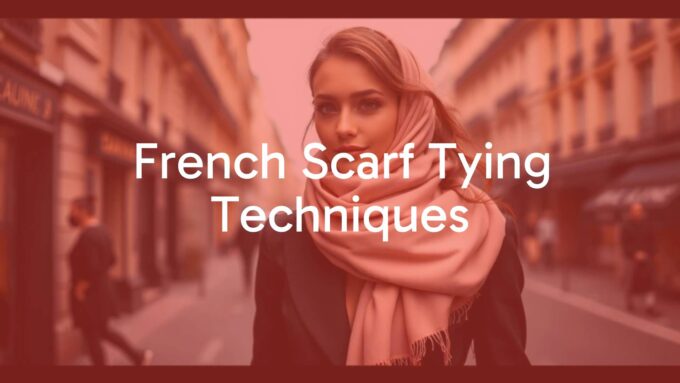Vintage shopping in Paris is a special experience, giving shoppers a real connection to the city’s fashion history and a chance to find unique, well-made pieces. It’s not just about buying clothes-it’s like a fashion treasure hunt and a fun, eco-friendly way to upgrade your wardrobe. Paris’s vintage shops offer all kinds of finds, whether you want a classic designer item or something unusual that stands out. The city’s thrift stores, consignment shops, and huge flea markets have something for everyone.
Interest in vintage shopping has grown a lot recently, mainly because people are more aware of the environment and want to avoid fast fashion. Young shoppers, especially, like that vintage pieces are better for the planet and have their own stories. Paris has always been a leader in fashion and has long had secondhand shops-called “friperies”-since the 1500s. It’s a place where each piece of clothing has meaning, and style is about more than following trends.

What Makes Vintage Shopping in Paris Special?
Parisian vintage shopping is different because it mixes old-school style, lasting quality, and that special French touch you can’t find anywhere else. Shoppers look for pieces that show French fashion’s timeless style and easy elegance. Vintage boutiques in Paris rarely feel like random thrift shops. Instead, they’re usually well-organized and have carefully chosen collections, making the shopping process enjoyable rather than overwhelming.
Paris has all types of vintage shops, from luxury consignment boutiques where locals sell top-quality items, to kilo shops where you pay by the weight. That means both serious collectors and first-timers can have fun and find something special.
Main Features of French Vintage Style
French vintage is known for quiet elegance, good fabrics, and styles that never go out of season. The focus isn’t on big logos but on the fit, fabric, and long-lasting design. Classics from the 1950s to 1990s are in demand: think timeless dresses, fitted blazers, real leather bags, and silk scarves, often in soft colors or richer tones.
French vintage fashion is about building a wardrobe with pieces you’ll wear for years, items that can work during the day or dress up for night. These clothes get better with age and have unique details you won’t find in new fast fashion.

Why Paris is Vintage Fashion Central
Paris’s rich fashion roots make it a center for great vintage shopping. Stylish Parisians often update their closets, so many gently used designer clothes find their way into consignment stores. That means the shops are always getting new, high-quality stock.
Paris also gives shoppers a real sense of history. Many stores have been around for centuries, and the love for art, high standards in clothing, and individuality lives on in the city’s vintage world. With more young people caring about sustainability, Paris stands out as a go-to place for thoughtful shopping.
What Should You Know Before Vintage Shopping in Paris?
Going vintage shopping in Paris is fun, but a bit of planning can help you enjoy it even more. Knowing when to go, how to get around, and what to look for will help you find the best pieces. There’s something for everyone, from carefully organized stores to lively street markets.
Here are some helpful tips and information to help you get the most out of your vintage shopping trip:
When to Go for the Best Finds
If you want first pick, visit shops early in the week (like Monday or Tuesday), as that’s when many stores put out new pieces after the busy weekend. Flea markets such as Les Puces de Saint-Ouen are open Friday to Monday-Saturday and Sunday are busiest. Come early for the best chances before it gets crowded.
Try to visit during slower tourist seasons (late fall, winter, early spring, except for holidays). Not only is shopping more relaxed, but you might also be able to negotiate a better price. Watch out for local clearance sale events (“braderie”) for extra deals.
Tips for Visitors: Getting Around, Language, and Payments
Paris has a good metro system. Most vintage shops are close to metro stops. If you’re staying a few days, get a Navigo Découverte card for unlimited rides. Single tickets or 10-ticket packs (carnets) work for visitors too.
Shopkeepers in tourist areas may speak some English, but try simple French greetings and thanks (‘Bonjour,’ ‘Merci,’ etc.)-it’s polite and appreciated. Always greet staff when you enter and say thanks when leaving.
Credit cards are common, but bring some euros for small purchases or shops that take cash only. Tell your bank you’ll be in France to avoid card trouble.
How to Spot Authentic French Vintage Pieces
Look for real materials like wool, silk, cotton, or linen. Check seams, linings, and details. Hand-finished touches and strong sewing mean good quality. Many older items have original labels-though very old or handmade pieces may not. Learn about classic French brands and their old logos. Vintage clothes will show a bit of age, but big flaws or repairs lower value. If something looks too perfect or purposely “aged,” it might be a newer copy. Use your judgment; true vintage often just feels special.
What Vintage Items Are Popular in Paris?
- Designer clothes: Chanel, Dior, YSL, Hermès, Céline
- French basics: trench coats, striped shirts (marinière), knitwear
- Clothing from the 70s, 80s, 90s
- Leather items: bags, belts, jackets
- Accessories: silk scarves, jewelry, sunglasses
- Retro home décor, furniture, old books, crafts

Which Paris Neighborhoods Are Best for Vintage Shopping?
Paris is made up of unique areas, each with its own “vintage” feel. Here are some top districts:
| District | Highlights |
|---|---|
| Le Marais | Many boutiques, from high-end to affordable. Try Kilo Shop, Free’p’star, Gaijin, and Palace Callas. |
| Saint-Germain-des-Prés | Great for luxury and classic basics. Visit Chercheminippes, Tilt Vintage, Mon Vintage. |
| Canal Saint-Martin/République | Trendy, youthful spots with designer labels and cool homeware. Check Thanx God I’m a V.I.P., Super Vintage. |
| Montmartre | Bohemian style. Chinemachine is a popular local favorite, and Numéro Deux is ideal for denim fans. |
| Oberkampf/Belleville (11th) | Affordable and unique finds. Acid Violette, Boutique La Bonne Pioche, Vintage Clothing Paris, La Frange à l’envers. |
| Saint-Ouen & Flea Markets | Les Puces de Saint-Ouen: the world’s largest flea market, plus local brocantes for everything from furniture to rare fashion. |

Types of Vintage Shops in Paris
Vintage shopping in Paris comes in many forms, from small boutiques to large, busy markets. Here’s what you’ll find:
- Boutique Vintage Stores: Small, select shops with high-quality items, sometimes from big-name designers. Example: Thanx God I’m a V.I.P., RoseMarket Vintage.
- Kilo Shops: Pay by weight, often a great deal if you buy several items. Example: Kilo Shop chain.
- Flea Markets and Brocantes: Outdoor markets with everything from clothes to antiques. Example: Les Puces de Saint-Ouen.
- Designer Vintage Specialists: Focus only on top brands and rare finds. Example: Didier Ludot, Mon Vintage.
- Second-hand and Thrift Shops: Less expensive, more variety, often has newer clothes as well. Example: Free’p’star, Guerrisol, Emmaüs.
- Decor and Antique Stores: For vintage housewares, art, and furniture. Example: Super Vintage.
Top-Rated Vintage Shops in Paris
Here are some of the city’s best-known vintage stores, all tried and tested favorites for locals and visitors:
- Kiliwatch Paris: Big, well-known shop for casual and designer finds, especially jeans and accessories.
- Thanx God I’m a V.I.P.: Colorful and organized by color, specializing in designer labels and pieces from the 1940s onward.
- Free’p’star: Known for low prices and bulk rummaging. Cheaper “euro” sections.
- Chinemachine: Packed store in Montmartre, full of party dresses, jeans, and fun accessories.
- Chez Snow Bunny: Y2K and 90s style, fun interior, and affordable jewelry.
- RoseMarket Vintage: Designer pieces from the 70s and 90s, carefully chosen by the owner.
- Guerrisol: Bargain-priced chain with new stock daily. Good for everyday clothes and digging for deals.
- Episode: Focus on 70s and 80s looks, fresh stock every week.
- Vintage by Ramin: Great for coats, leather jackets, and knits-well-stocked and close to other vintage outlets.
- Tilt Vintage: Known for French basics like trench coats and sweaters, plus some designer items.
- Chercheminippes: Five shops with everything from casual wear to luxury and home décor. Prices for every budget.
- Les Puces de Saint-Ouen: Huge market for vintage, antiques, rare finds, and clothing.
Guide to Vintage Shops by Area
Each Paris neighborhood has its own style of vintage shop. Here’s a summary of top shops by area:
- 1st (Palais Royal): Didier Ludot – top designer vintage.
- 2nd: Kiliwatch, Episode, Bobby – mix of brands and eras.
- 3rd (Le Marais North): Gaijin (Japanese labels), Chez Snow Bunny (Y2K), Palettist Vintage (70s to 2000s).
- 4th (Le Marais South): Kilo Shop, Skat Vintage (curated fashion), Palace Callas, Open Dressing.
- 6th (Saint-Germain): Chercheminippes, Tilt Vintage, Mademoiselle Joséphine (luxury accessories), Mon Vintage (by appointment).
- 9th: RoseMarket Vintage (70s/90s focus), Iregular (modern/retro mix).
- 10th (Canal St-Martin): Thanx God I’m a V.I.P., Super Vintage.
- 11th (Oberkampf/Belleville): Acid Violette (Y2K/90s), La Bonne Pioche, Vintage Clothing Paris, La Frange à l’envers, Emmaüs.
- 18th (Montmartre): Chinemachine, Numéro Deux (Levi’s specialist); plus Les Puces de Saint-Ouen just outside city limits.
How Does Vintage Shopping Work in Paris?
There are a few things to keep in mind to make your shopping trip smoother and more enjoyable:
Shopping Etiquette and Tips
- Always greet the staff (“Bonjour” / “Bonsoir”).
- Say thank you when leaving (“Merci, au revoir”).
- Ask before using fitting rooms-some are small or missing.
- Handle items with care.
- Keep your belongings safe, especially at busy flea markets.
- In markets, it’s okay to touch and look closely at items, but respect each seller’s stall.
How Kilo Shops Work
- Check colored labels for price per kilo.
- Estimate the weight-heavier items will cost more.
- Check for wear, stains, or damage.
- Some kilo shops don’t have fitting rooms, so wear clothes you can try things over.
- Enjoy searching through many racks-unexpected treasures await.

How to Tell If Something Is Real Vintage
Get familiar with real fabrics (cotton, wool, leather), check stitches and details, and know how old brands used to label their clothes. For expensive brand-name or designer vintage, shop from well-known stores that guarantee authenticity and can explain what makes an item real.
Prices and Bargaining
Prices can vary a lot. High-end boutiques cost more, but most shops are cheaper than new retail prices. In markets and small shops, it’s okay to ask for a better price. Try: “Quel est votre meilleur prix?” (What’s your best price?) Make reasonable offers, especially if you’re buying more than one thing. In regular stores, prices are usually fixed.
Are There Vintage Shopping Tours in Paris?
Yes! You can choose:
- Self-guided walking tours: Find routes online-these map out the best shops in each district. You can download or print these guides and visit at your own speed.
- Theme routes by style/era: Look for tours focused on luxury, boho, 90s, or Y2K shops. These are good if you know exactly what you want.
- Guided group or private tours: Book a slot with a local fashion lover or stylist who can take you to hidden gems and give you expert advice. Some help with authentication and bargaining too.
Frequently Asked Questions
Is vintage shopping in Paris cheap?
It can be! Kilo shops, Free’p’star, Guerrisol, and other big thrift stores let you find pieces for just a few euros. Designer shops are pricier but still often cost less than buying new.
Can you get luxury vintage?
Yes. Paris has many stores packed with secondhand designer gems-Chanel, Dior, Hermès, and more. Try Didier Ludot, Thanx God I’m a V.I.P., or Chercheminippes for high-quality finds.
What’s the return policy?
Most vintage shops don’t allow returns. You usually buy “as is,” so check items carefully before paying. Try things on if you can, and always ask about returns if you’re unsure. Some online stores are more flexible-read their terms.
Where do locals shop for vintage?
Parisians often go to smaller, lesser-known thrift shops, especially in the 11th and 18th districts, or to suburban markets like Montreuil. Get off the main tourist paths and ask shop owners for tips. Exploring side streets often leads to the best, lesser-known finds!












Leave a comment